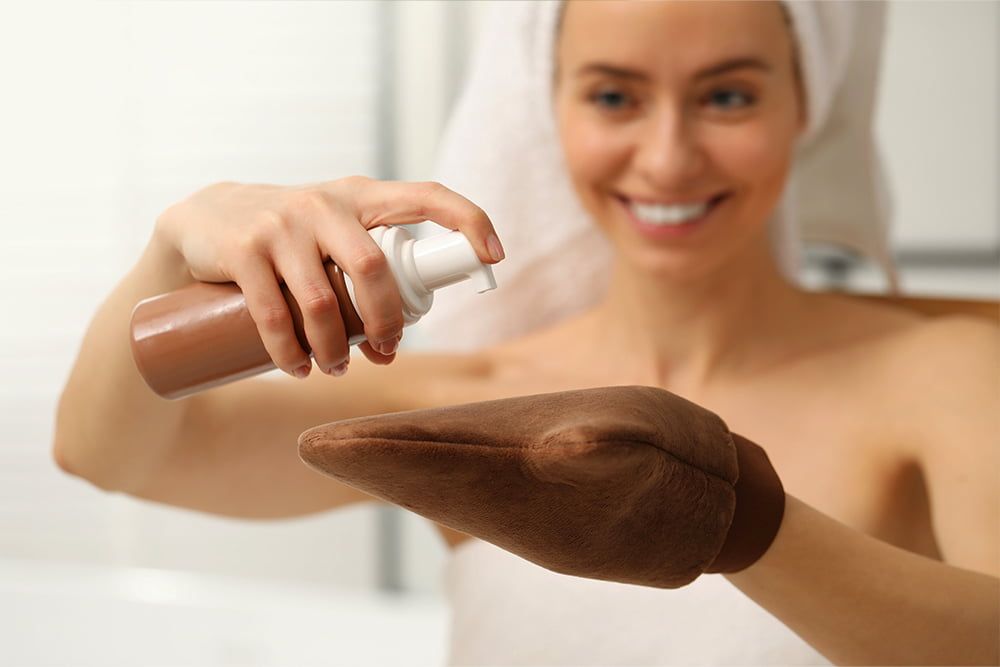Self-Tanning: How To & No-Go's
Achieving a natural tan all year round is possible with the help of self-tanning products. However, there are some important points to consider if you want to achieve best tanning results. In this week's beauty blog, we focus on important information regarding self-tanners and some useful tips on how to "get the glow".
Do self-tanning products damage the skin?
Generally, a self-tanning cream is the most skin-friendly alternative. Most products use DHA, erythrulose or a blend of the two. These substances contain sugar molecules that occur naturally in the skin, making them safe to use. DHA begins to take effect between six to eight hours after application, whereas the effect of erythrulose only starts to take effect after two days. However, a tan achieved using erythrulose lasts longer.
Do self-tanning products have an effect on all skin types?
Unfortunately, this is not the case. Tanning substances are composed of sugar molecules, which react with protein and amino acids found in the skin. Approximately 10 to 15 percent of people lack these substances, and a reaction does not take place.
Which product type is best suited?
Self-tanning products are available in various forms such as lotions, gels, creams, foams and sprays. Each of these product types has the same effect. In the end, it boils down to personal preference.
Which tanning intensity suits my skin type?
When choosing a shade, it is advised to select one that is only a few tones darker than your current skin tone. If in doubt, opt for a light shade and reapply to intensify the effect.
If the product turns out to be too dark, simply blend with a cream to reduce its intensity.
Note: If your skin turns orange after application, this may indicate that you are suffering from an imbalanced acid mantle. It is wise to sort through your current products - perhaps the shower gel that you are using is too aggressive.
Prepping the skin
Smooth skin that is free from any dead skin cells is the optimal basis for a long-lasting and even tan. Use a body scrub to get rid of any dead skin cells to beautifully smooth the skin, and remember to exfoliate the elbows, heels and knees. Also, wax, shave or use an epilator to remove any unwanted hairs a day before using a self-tanner.
Moisture is key
Scientists have found that skin with a higher moisture content is better able to absorb colour. Therefore it is recommended to moisturize the skin prior to applying your tanning product.
No go's
Do not take a long bath before applying any tanning lotions to your skin. The flushed upper layer of the skin could lead to a scattered tan.
Proper application
Depending on the type of tanning product you are using, it is advised to follow the instructions that come with the product. Creams are best applied using circular movements. Wash your hands and nails immediately after use. Alternatively, use a disposable glove for application purposes.
The tanning cream must absorb into the skin entirely. This may take up to 30 minutes. Rushing the process can lead to stains on clothing or uneven tanning results.
What applies to the face does not necessarily apply to the body
Facial skin is thinner than the skin found on the rest of our bodies. Therefore tanning creams that are suitable for the body are not necessarily suitable for the face. The face requires a specially formulated self-tanner that caters to the structure of the skin. Avoid applying these products to the hair line and eyebrows, and ensure that the tanning creams used on the face and body are of the same intensity level.
Achieving a long-lasting tan
Only the upper layer of the skin, the epidermis, takes on a tan. The epidermis continuously renews itself by flaking off. As a result, artificial tans only last approximately three to four days. The duration of a tan can be prolonged by means of treating the skin with a peeling or applying moisturizing creams on a regular basis. A permanent tan can only be achieved by using self-tanners on a regular basis.
Uneven tanning results
When you experience uneven tanning results, it is often recommended to use a body peeling or scrub again. However, this might not be the best solution since the already strained skin is put through another strenuous treatment. Thus, an uneven tan is most likely replaced by reddened and irritated skin. Unfortunately, lemon juice will have the same harsh effect of the skin.
It is best to start slow when it comes to self-tanning. Start off using a low intensity, applying darker shades as you get more comfortable with the idea.
Self-tanning & UV rays
Self-tanners do not protect the skin from UV rays. Always wear sunscreen when exposed to the sun for longer periods of time.
Find a wide selection of self-tanning products here.
Related products
-
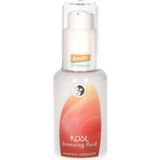 3.6 (39)
3.6 (39)Martina Gebhardt Rose Bronzing Fluid, 30 ml
- Pleasantly fragrant
- Cares for dry skin
- With valuable rose oil
$14.81 ($493.79 / l)Delivery by August 07
-
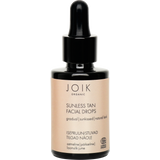 3.3 (23)
3.3 (23)JOIK Organic Sunless Tan Facial Drops, 30 ml
- Easy to use
- Buildable & hydrating
- Natural finish
$37.53 ($1,251.02 / l)Delivery by August 07
-
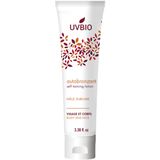 4.3 (25)
4.3 (25)UVBIO Self Tanning Lotion, 100 ml
- For all skin types
- Ensures smoothness & suppleness
- Blends perfectly with the skin
$19.00 ($189.99 / l)Delivery by August 07
-
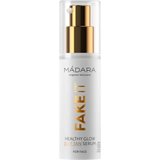 4.0 (4)
4.0 (4)MÁDARA Organic Skincare Healthy Glow Self Tan Serum, 30 ml
- Suitable for fair to medium skin tones
- Delicate shimmer finish
- Easy to use
$31.35 ($1,044.99 / l)Delivery by August 07
Magazine Articles:
Discover Ecco Verde:
-
Get at least 1 free sample
per order -
Delivery in 3 business days.
More than 19.750 products
Secure payments
with SSL encryption technology
